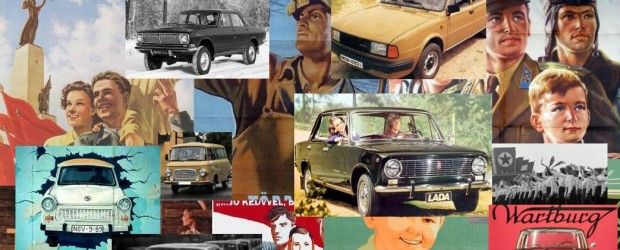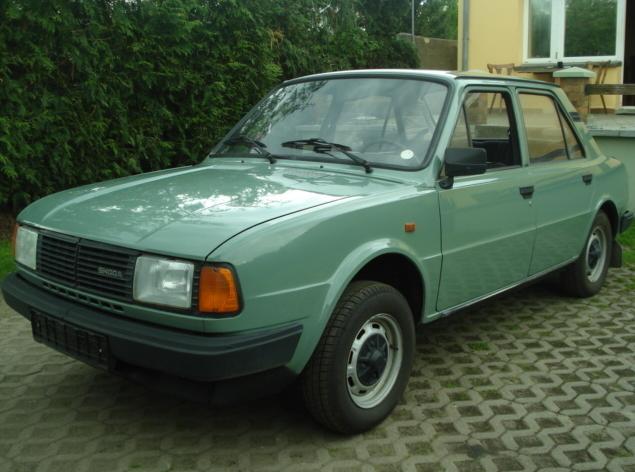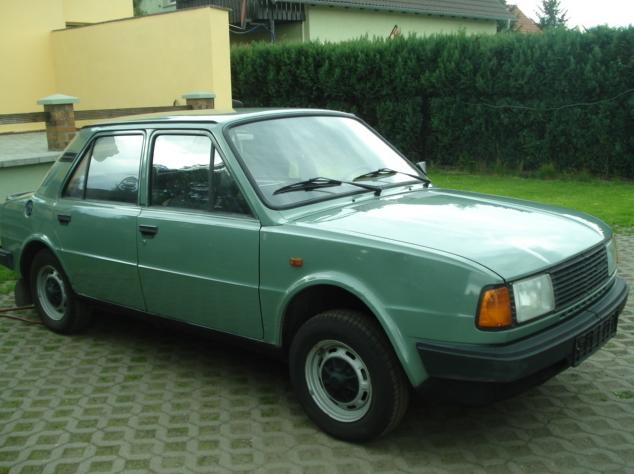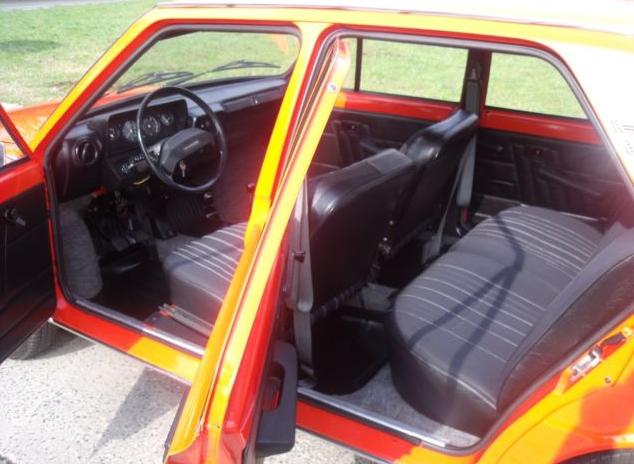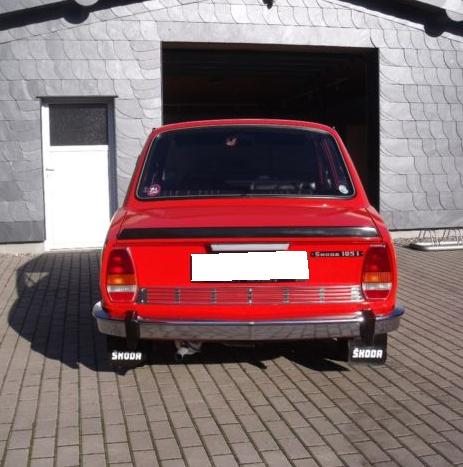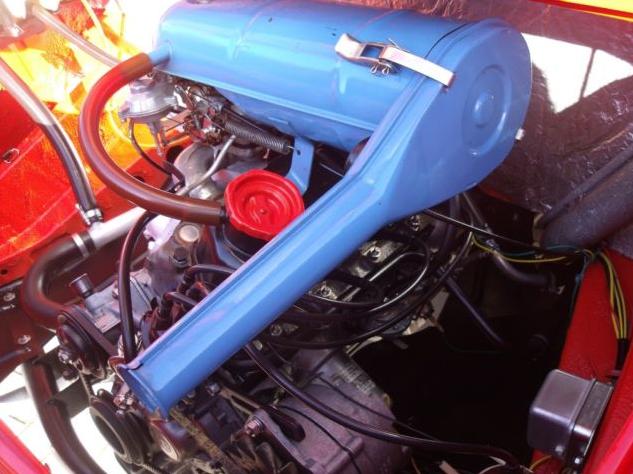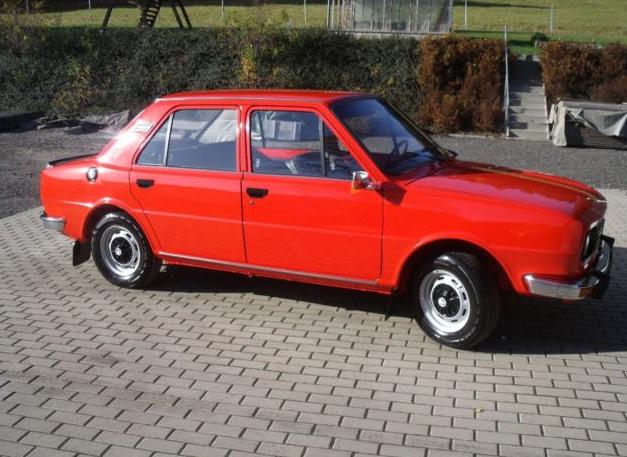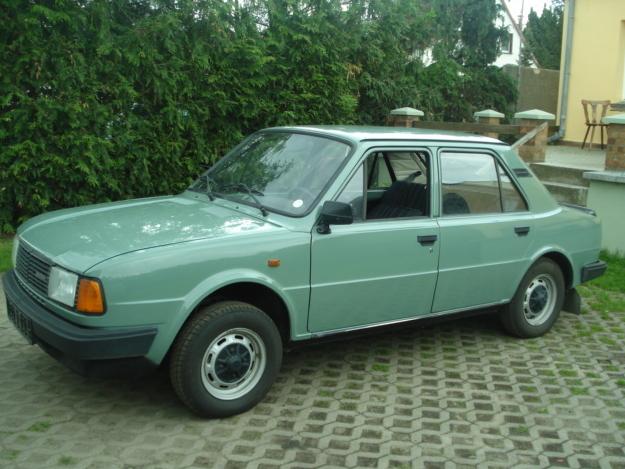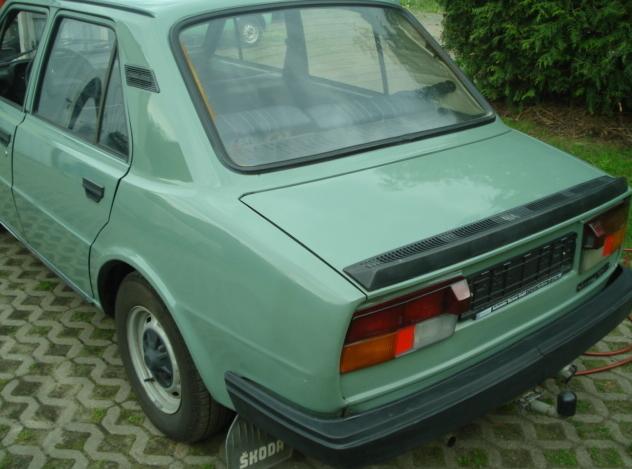The Škoda 105/120/125 were three variations of a rear-engined, rear-wheel drive compact car that was produced by Czechoslovakian car manufacturer AZNP in Mladá Boleslav between 1976 and 1990; engine sizes were 1.05 and 1.2 liters respectively. The range was face lifted in 1984 with a revised front design and engine improvements, together with the introduction of a new 1.3 litre version known as the Škoda 130/135/136.
All 105/120/125 and 130 models known by their Škoda internal reference as Type 742, and the later 135 and 136 models as Type 746. In the UK the 105/120 models were known as the Super Estelle until 1984 when the face lifted models were called Estelle Two.
Initial design
In the early 1970s, Škoda had originally intended to produce their successor to the S100/110 as a front-engined front-wheel
drive model. However, because of the lack of funding (Škoda had even applied for license in Moscow to produce their new car
with a front-engine and front-wheel drive), Škoda was refused a licence and was forced to update the earlier S100/110 saloon models.
The main reason Škoda was not granted a licence to produce their new car was because it would have turned out to be a thoroughly
more modern car than any other car from the Soviet Union, something which the Russians wouldn’t have been too happy about.
At that time, most cars from the Soviet Union had either a front engine driving the rear wheels or a rear engine driving the rear wheels.
There was even a front-engined front-wheel drive Škoda 105/120 prototype, which looked almost identical to the rear-engined one.
Because imports were banned, Škoda would not have had the proper resources or technology to produce a front-engined car with
front-wheel drive.

Introduction
In August 1976, the Škoda 105/120 went into production. Despite being basically the same as the previous S100/110 under the skin, the new cars had a lot of improvements, such as a front-mounted radiator with a thermostatic fan. The heating unit was now inside the dashboard, and the fuel tank was now underneath the rear seat. All models had much the same mechanical specification as the previous models, with a 4-speed gearbox, independent suspension, worm-and-drive steering, and swing-axle rear suspension.
The choice of engines for the Škoda 105/120 was either a 1046 cc unit for the 105 models or a 1174 cc unit for the 120 models. The 105S and 105L produced 44 bhp (33 kW; 45 PS), the 120L produced 49 bhp (37 kW; 50 PS), and the 120LS and 120GLS produced 54 bhp (40 kW; 55 PS).
The 1976 model range compromised:
Škoda 105 S (Standard)
Škoda 105 L (Luxe)
Škoda 120 L (Luxe)
Škoda 120 LE (Luxe Economic)
Škoda 120 LS (Luxe Sport)
Škoda 120 GLS (Grand Luxe Sport)

Initial criticism
The cars were initially criticised for unpredictable handling "at the limit" but it is unlikely that most motorists would notice anything untoward under normal conditions. The cars continued to win their class with monotonous regularity on international rallies, and were increasingly popular with budget-conscious motorists across Europe. The location of the radiator at the front of the car had the advantage of cooling the engine much more efficiently on the motorway. However, because it was much more complex than in the earlier models, the cooling system was very prone to airlocks, which often led to overheating and even head gasket failure.
Success
Rugged and robust vehicles, they were designed for the primitive roads of Soviet-dominated Central and Eastern Europe, where the best traction layout of a two wheel drive car is a significant benefit. They were once common sight in Czech Republic, Slovakia, Hungary and Poland.
Even enthusiasts for the marque would agree that quality control could sometimes have been improved in this era. It was these cars that inspired the famous Škoda jokes, but re-evaluation of the models with the benefit of many years hindsight means that the cars are much more highly regarded today.

Improvements
The existing lineup was joined with the Škoda 120 standard model in April 1978. This model was, from the mechanical point of view, identical to the 120 L but had the same basic equipment level as in the 105 S plus reclining front seats.
In March 1981, the 105 GL was added to the lineup. It was mechanically identical to the existing 105 S and 105 L models only it featured the equipment specification of the 120 GLS model. Both the 105 GL and the 120 GLS were given black bumpers and horizontal taillights.
In 1982, the range was supplemented by an attractive Škoda 120 Garde, which was equipped with the 1174 cc, 54 bhp (40 kW; 55 PS) engine from the 120 LS and 120 GLS Saloon models. This had much improved semi-trailing arm rear suspension, and paved the way for the 130-136 models of the late 1980s.
Around this time, the 105 SP was introduced. It was essentially a commercial version of the 105 S, having no rear seats and no glass just solid metal in the rear doors. It was only available in Czechoslovakia where it proved popular with delivery and businessmen.
In November 1982, the 120 LE was added to the range. It was essentially a 120 L with a modified top gear ratio to improve fuel economy (hence E for Economic).
The Škoda 130 models followed in 1984 and introduced many improvements into the existing 105/120 range. The very first Škoda 130 models were introduced in August 1984, shortly after the earlier Škoda 105/120 models were given a mild revamp. Developed from the earlier Škoda 105/120 models (some of which continued [alongside the Škoda 130 models] in production, like the 105S, 105L, 120L, 120GL, 120LS, 120LX and 120GLS), the 130 series used a new 1289 cc engine (which produced 58 bhp (43 kW; 59 PS), and which was just an enlarged version of the 1174 cc engine used in the 120 series); this 1289 cc engine also saw use in the cars successor, the Škoda Favorit.
In addition, the rear suspension was now redesigned to a semi-trailing arm layout, and the track of the car was widened to 55 inches (1395 m). 5 speed gearboxes and "four pot" front brake disc calipers were other updates. The new models countered the earlier criticism that had been made in some quarters of tail-happy handling, with the prominent UK motoring magazine "Autocar and Motor" remarking in 1988 that the new 136 Rapid model "handles like a Porsche 911".
In 1987, with the introduction of the new Škoda Favorit, most of the Škoda 105/120 series was discontinued, with the exception of just the 105 L, 105 SP and 120 L. When the 125 L was added in 1988, the 105 SP was discontinued, followed by the 105 L in 1989. Apart from the 135/136 series, the only other rear-engined models that remained were now the 120 L and 125 L.
The end of an era
After a production run of fourteen years, which included a total of 1,961,295 cars (counting just the Škoda 105/120/125 series cars alone), production of the very last rear-engined Škodas was finally brought to an end in 1990.
On October 5, 2004, a survey conducted by AUTOSALON revealed that among the 3,706,012 cars registered in the Czech Republic, 1,780,124 were Škodas. At 305,726 cars, the Škoda 120 represented the entire group, while there were 216,857 Škoda 105 cars, which made that model the fourth most common Škoda car.
Model by model
| MODEL | TYPE | PRODUCED | ENGINE | BORE/STROKE | POWER | TRANSMISSION |
| Škoda 105 S | 742.10 | 1976–1987 | 1046 ccm | 68/72mm | 33.1 kW (44 hp) | 4-speed manual |
| Škoda 105 L | 742.10 | 1976–1989 | 1046 ccm | 68/72mm | 33.1 kW (44 hp) | 4-speed manual |
| Škoda 105 GL | 742.10 | 1981–1983 | 1046 ccm | 68/72mm | 33.1 kW (44 hp) | 4-speed manual |
| Škoda 105 SP | 742.10 | 1982–1988 | 1046 ccm | 68/72mm | 33.1 kW (44 hp) | 4-speed manual |
| Škoda 120 | 742.12 | 1978–1983 | 1174 ccm | 72/72mm | 36.7 kW (49 hp) | 4-speed manual |
| Škoda 120 L | 742.12 | 1976–1990 | 1174 ccm | 72/72mm | 36.7 kW (49 hp) | 4-speed manual |
| Škoda 120 LE | 742.12 | 1982–1983 | 1174 ccm | 72/72mm | 36.7 kW (49 hp) | 4-speed manual |
| Škoda 120 GL | 742.12 | 1984–1987 | 1174 ccm | 72/72mm | 36.7 kW (49 hp) | 4-speed manual |
| Škoda 120 LS | 742.12X | 1976–1987 | 1174 ccm | 72/72mm | 40.5 kW (54 hp) | 4-speed manual |
| Škoda 120 LX | 742.12X | 1984–1987 | 1174 ccm | 72/72mm | 40.5 kW (54 hp) | 4-speed manual |
| Škoda 120 GLS | 742.12X | 1976–1984 | 1174 ccm | 72/72mm | 40.5 kW (54 hp) | 4-speed manual |
| Škoda 120 GLS | 742.12X | 1984–1987 | 1174 ccm | 72/72mm | 40.5 kW (54 hp) | 4-speed manual |
| Škoda 125 L | 742.12X | 1988–1990 | 1174 ccm | 72/72mm | 40.5 kW (54 hp) | 5-speed manual |
| Škoda Garde | 743.12X | 1981–1984 | 1174 ccm | 72/72mm | 40.5 kW (54 hp) | 4-speed manual |
| Škoda Rapid | 743.12X | 1984–1985 | 1174 ccm | 72/72mm | 40.5 kW (54 hp) | 4-speed manual |
